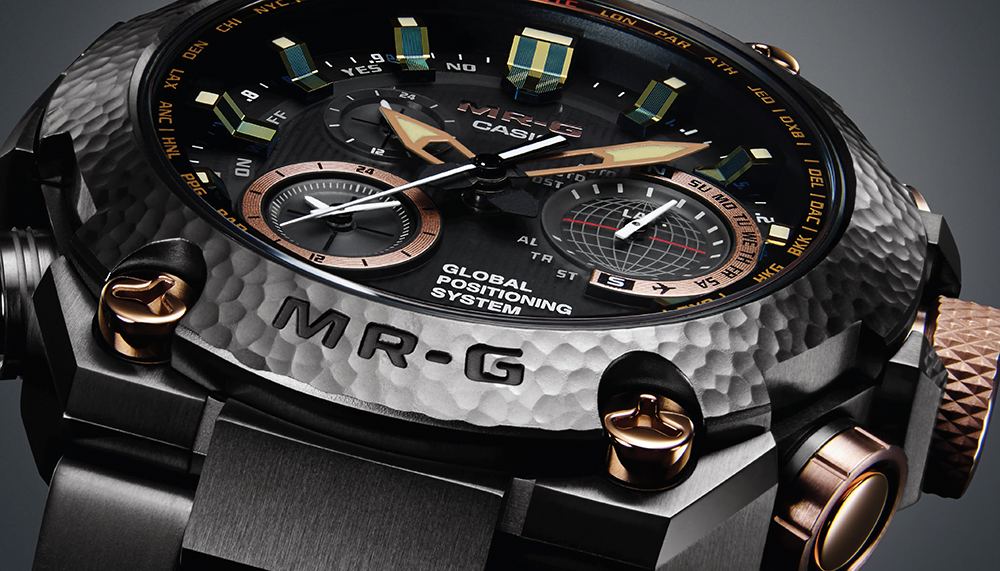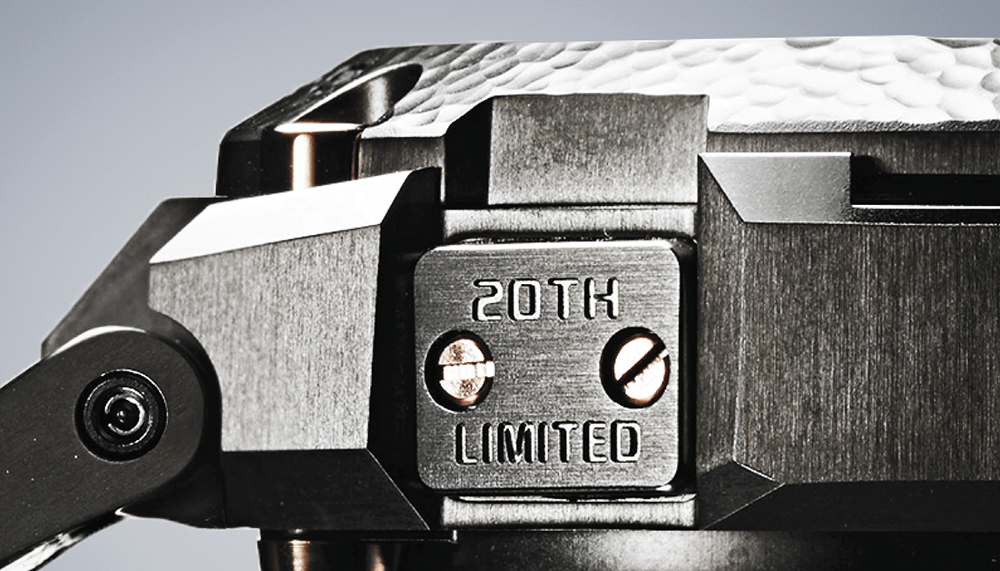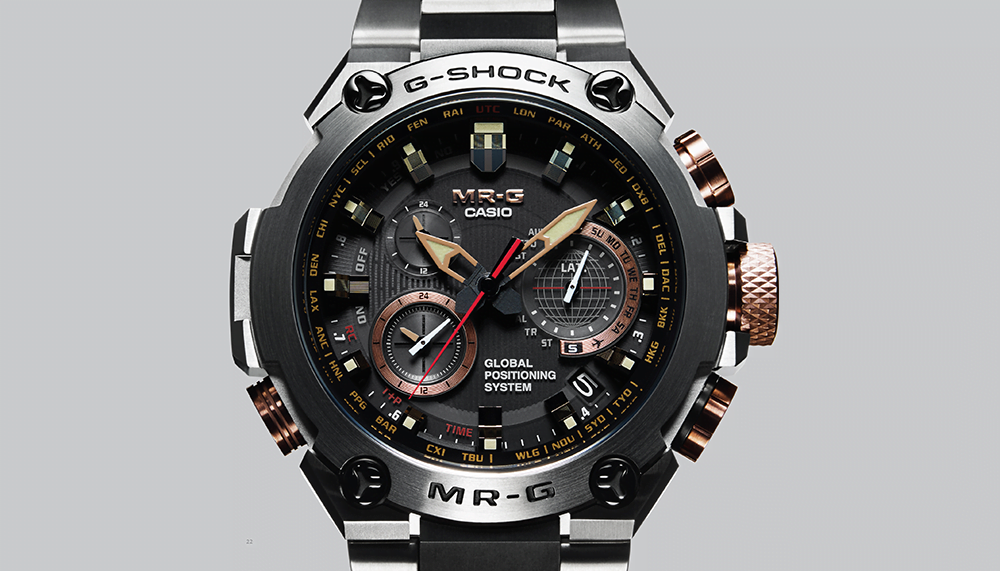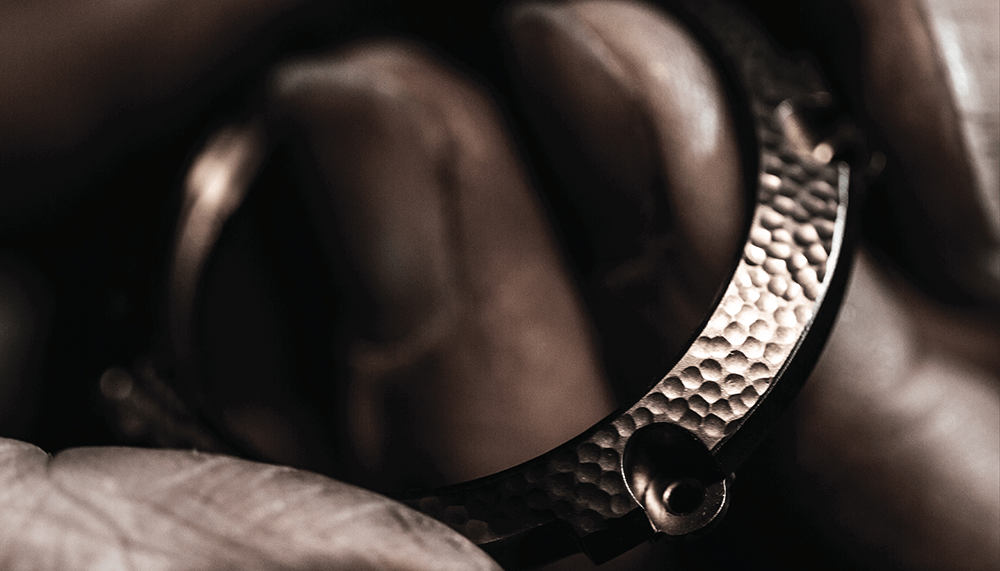in for a shock
Boasting a cult popularity that many luxury timepiece brands would envy, Casio had been hinting that it wanted in on the haute horology pie. New solar-powered and radio-controlled G-Shock MR-G watches debuted in 2008 with four-figure price tags that were valuations previously unheard of for the G-Shock range, which had risen in reputation as an affordable and ‘life-proof’ streetwear accessory. Not long afterward, Casio bumped the highest price of the MR-G to US$8,872 with a Akagane (copper-coloured) edition in late 2015, whose retail price some aficionados felt was unwarranted. The high-volume sales of entry level G-Shocks translated to decent turnover for its newly created high-end tier. Mechanical watch snobs, however, were only partially convinced by Casio’s leap into luxury.
The Japanese superpower of quartz and digital watchmaking truly garnered the attention of serious watch connoisseurs when it teased a version of the G-Shock MR-G that would be handmade using an ancient Japanese metalwork technique. This week, Casio unveiled one of its most expensive G-Shocks to date – the MRG-G1000HT – which employs a samurai ironsmith technique called Tsuiki-doki, one that has been conferred the title of one of Japan’s Important Cultural Properties, similar to UNESCO’s Intangible Cultural Heritage designation.
Blitzing the G-Shock collection’s previous asking prices with an auspicious retail price of US$6633, the Casio G-Shock MR-G’s 20th anniversary edition just might be the gateway product for inaugurating Casio and Casio consumers into the premium market. After breaking the four-figure barrier barely two years ago, Casio’s retailed G-Shocks are now pushing five. There are also extremely rare, gold-plated and diamond-encrusted G-Shocks in the world today that are already valued at five figures and sometimes put up for auction.
Shibuya-based Casio concisely celebrates two decades of its MR-G series with a watch that includes all of Casio’s most prominent horological innovations to date. Besides solar charging, world time comprising the time in 27 cities and 40 time zones, countdown timer and alarm functions, this new G-Shock’s time is also constantly regulated by satellites and radio stations – a technology that Casio and Seiko have been racing to perfect and further for the past decade.
G-Shock now has all the elements of a luxury label: A small limited-edition run of only 300 MRG-G1000HT models worldwide, cutting-edge technology, a trusted brand name, sophisticated visages, precious materials and arduous handcrafting. In collaboration with third-generation artisan Bihou Asano, these timepieces are encircled by labours of love.
The bezel and select centre band links of each piece undergoes tsuiki-doki, ensuring that no two bezels are identical. Traditional colour finishes like Oboro-gin (silver-grey) and Akagane (copper) that are applied to the armour of Japanese warriors, are also applied to the MRG-G1000HT.
The status symbol of schoolyards now looks to become the status symbol of the same kids, who are now fashion-forward and all grown up. An unostentatious and shock-proof watch that enjoyed unexpected success and whose ‘G’ stands for ‘gravity’, the G-Shock has arguably completed its groundbreaking penetration of the luxury market successfully, which has the ailing Swiss watch industry understandably shaken.













